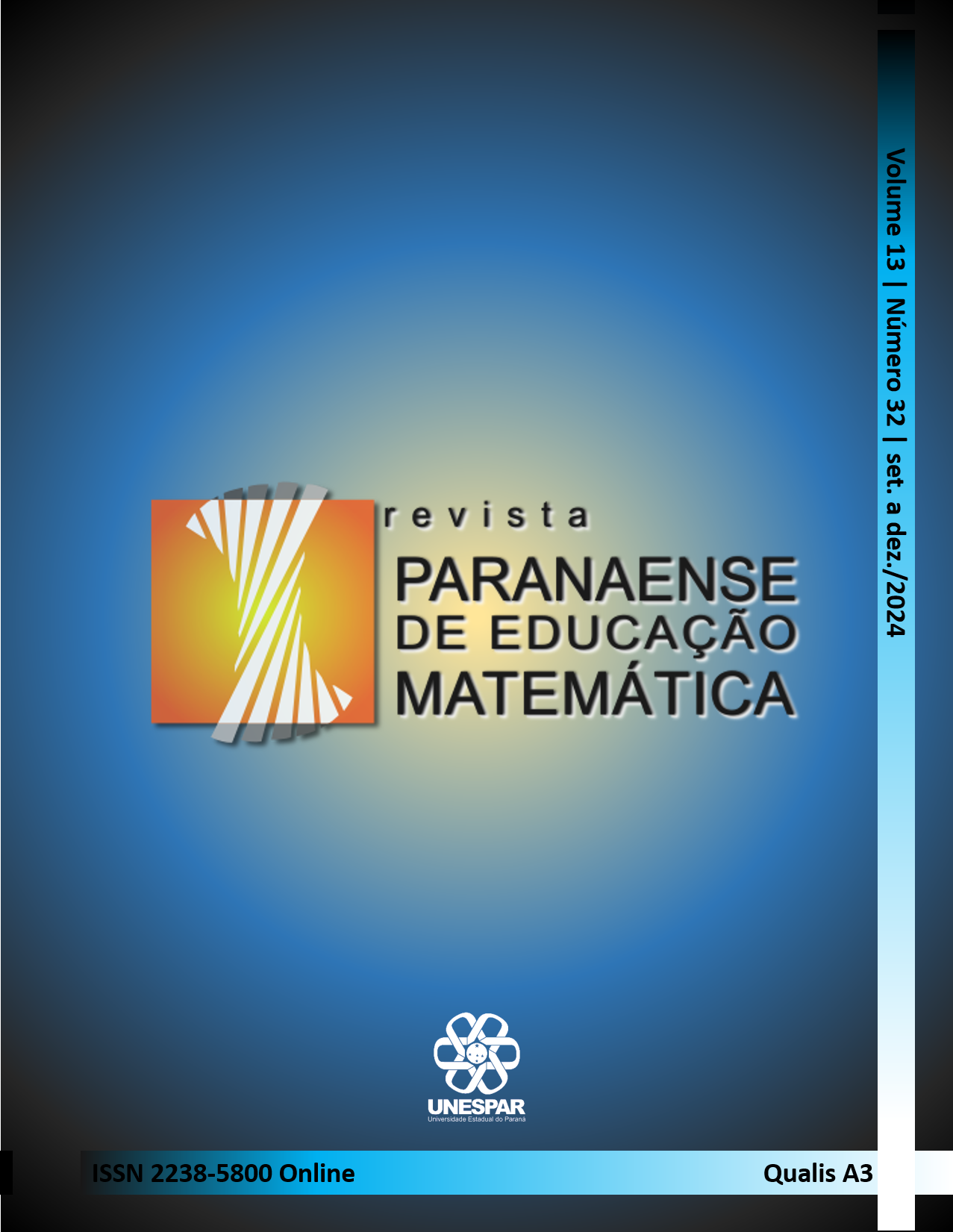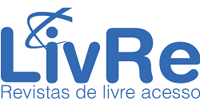Aplicação de derivada para identificar descargas parciais em cabos de redes de distribuição de energia subterrânea
DOI:
https://doi.org/10.33871/rpem.2024.13.32.8823Abstract
Differential and integral calculus is one of the main subjects that make up the curriculum for the first year of Engineering courses. This is because this field of study requires improvement in students' logical reasoning skills, aiming to enable them to solve everyday problems. The teaching of derivatives is one of the pillars that guide this subject, and is also a prerequisite for understanding topics related to other academic areas. However, it is common for it to be approached theoretically, which can make learning difficult. The theoretical and detached way in which it is often taught, without linking it to everyday problems, has frequently hindered the understanding of derivatives. This approach leads students to discouragement and, consequently, to failure. Another challenge is that applications in the field of engineering are often based on discrete-time systems, making it difficult to apply previously acquired knowledge. In this context, the objective of this work is to present an application of derivatives in discrete-time systems for the identification of partial discharge in underground power distribution network cables. Using the model of one of the patterns of partial discharge from a real network, simulations were implemented for the identification of partial discharges in a dataset from another real network. The derivation of discrete-time systems was employed as a tool for this purpose. It is hoped that this initiative may assist academic professionals in associating theory and practice, thereby helping students to build new paths to knowledge.
Downloads
References
BOYER, C. B. História da matemática. São Paulo: Edgard Blucher Ltda., 1996.
BRITO, A. J.; CARDOSO, V. C. Uma abordagem histórico-pedagógica dos fundamentos do Cálculo Diferencial: reflexões metodológicas. Zetetike, Campinas, v. 5, n. 7, p. 129-144, jan./jun. 1997. Disponível em: https://periodicos.sbu.unicamp.br/ojs/index.php/zetetike/article/view/8646764/13666. Acesso em: 09 out. 2023.
ÇETIN, N. The Ability of Students to Comprehend the Function Derivative Relationship with Regard to Problems from Their Real Life, Primus, v. 19, p. 232-244, mai. 2009. Disponível em: https://doi.org/10.1080/10511970701686987. Acesso em: 11 out. 2023.
COSTA, G. L. M.; FIORENTINI, D. Mudança da Cultura Docente em um Contexto de Trabalho Colaborativo de Introdução das Tecnologias de Informação e Comunicação na Prática Escolar. Bolema, Rio Claro, v. 20, n. 27, p. 1–19, maio, 2007. Disponível em: https://www.redalyc.org/pdf/2912/291221869002.pdf. Acesso em 15 fev. 2024.
DALL’ANESE, C. Conceito de derivada: uma proposta para seu ensino e aprendizagem. 2000. 140f. Dissertação (Mestrado em Educação Matemática) - Programa de Pós-Graduação em Educação Matemática. Pontifícia Universidade Católica de São Paulo, São Paulo, 2000.
DALL’ANESE, C. Argumentos e metáforas conceituais para a taxa de variação. 2006. 131f. Tese (Doutorado em Educação Matemática) – Programa de Pós-Graduação em Educação Matemática. Pontifícia Universidade Católica de São Paulo, São Paulo, 2006.
DENSLEY, J. Ageing mechanisms and diagnostics for power cables - an overview, IEEE Electrical Insulation Magazine, v. 17, p. 14-22, 2001. Doi:10.1109/57.901613. Disponível em: https://ieeexplore.ieee.org/document/901613. Acesso em: 15 dez. 2023.
FELIPPE, A. C. et al. Visão computacional no ensino da derivada: um estudo sobre a medição de objetos utilizando imagens. Revista de Ensino de Engenharia., v. 38, n. 3, p. 3-15, 2019. Disponível em: http://www.repositorio.ufop.br/jspui/handle/123456789/14532. Acesso em: 12 out. 2023.
FERREIRA, P. E. A.; BURIASCO, R. L. C. Tarefas de matemática à luz da educação matemática realística. Revista Paranaense De Educação Matemática, v. 10 n. 22, p. 8–31. Disponível em: https://doi.org/10.33871/22385800.2021.10.22.8-31. Acesso em: 10 jan. 2024.
FONTES, B. C. Vídeo, comunicação e Educação Matemática: um olhar para a produção dos licenciandos em matemática da educação a distância. 2019. Dissertação (Mestrado em Educação Matemática) - Instituto de Geociências e Ciências Exatas, UNESP, Rio Claro (SP), 2019.
GOMES, T. O.; SILVA, R. C.; MORAIS, L. B. Aplicações do cálculo diferencial no cotidiano. Revista Semiárido De Visu, [S. l.], v. 7, n. 3, p. 330–341, 2019. Doi: 10.31416/rsdv.v7i3.82. Disponível em: https://semiaridodevisu.ifsertao-pe.edu.br/index.php/rsdv/article/view/82 Acesso em: 15 dez. 2023.
GONÇALVES, D. C.; REIS, F. S. Atividades investigativas de aplicações das derivadas utilizando o GeoGebra. Bolema: Boletim De Educação Matemática, v. 27, n. 46, p. 417-432, ago. 2013. Doi: 10.1590/S0103-636X2013000300006.
HABRE S.; ABBOUD M. Students’ conceptual understanding of a function and its derivative in an experimental calculus course. The Journal of Mathematical Behavior, v. 25, p. 57-72, dez. 2006. Disponível em: https://doi.org/10.1016/j.jmathb.2005.11.004. Acesso em: 20 nov. 2023.
HAGHJOO, S. et al. Evaluating-the-Understanding-of-the-University-Students-Basic-Sciences-and-Engineering-about-the-Numerical-Representation-of-the-Average-Rate-of-Change. International Journal of Educational and Pedagogical Sciences. v. 14, n. 2, 2020. Doi: 10.6084/m9.figshare.12488879.
INTERNACIONAL ELECTROTECHNICAL COMISSION. IEC 60270: High voltage test technique - partial discharge measurements. IEC: Switzerland, 2000.
INSTITUTE OF ELECTRICAL AND ELECTRONICS ENGINEERS. IEEE 400.3: Guide for PD Testing of Shielded Power Cable Systems in a Field Environment. IEEE: New York, USA, 2006. Doi: 10.1109/IEEESTD.2007.305045.
IME - USP. História das derivadas. Disponível em: http://ecalculo.if.usp.br/histo-ria/historia_derivadas.htm. Acesso em: 31 set. 2023.
KENSKI, V. M. Educação e Tecnologias: o novo ritmo da informação. 8 ed. Campinas: Papirus, 2012.
LIMA, E. L. Análise real – Funções de uma variável. vol. 1. Rio de Janeiro: IMPA, 2013. (Coleção matemática universitária).
MURPHY, L. Reviewing reformed calculus. Trinity University Mathematics: Texas, 2006. Disponível em: http://lagrange.math.trinity.edu/tumath/research/studpapers/s45.pdf. Acesso em: 20 out. 2023.
NALON, J. A. Introdução ao processamento digital de sinais. 1 ed. Rio de Janeiro: LTC, 2009.
O’HAVER, T. C. Pragmatic introduction to signal processing. Maryland: Kindle Direct Publishing, 2020. Disponível em: file:///C:/Users/elian/Downloads/IntroToSignalProcessing2020.pdf. Acesso em: 28 dez. 2023.
OPPENHEIM A. V.; WILLSKY, A. S. Signals and Systems. London: Prentice-Hall, 1983.
RAMOS, V. V. Dificuldades e concepções de alunos de um curso de licenciatura em
Matemática sobre derivada e suas aplicações. 2009. 84f. Dissertação (Mestrado em
Educação Matemática) – Programa de Pós-Graduação em Educação Matemática. Pontifícia Universidade Católica de São Paulo, São Paulo, 2009.
RUAS, V. L. O. F.; MACÊDO, J. A.; CRISOSTOMO, E. Integração das tecnologias digitais ao ensino da Matemática: um link do estado do conhecimento para tendências educacionais emergentes. Educação Unisinos (online), v. 27, 2023. Doi: 10.4013/edu.2023.271.17.
SILVEIRA, H. B. Sinais e sistemas lineares I. Fonte: paginas.ufsc. UFSC, Florianópolis, 2014. Disponível em:https://hector.paginas.ufsc.br/files/2013/12/Sinais-I-Notas-de-Aula.pdf. Acesso em: 01 nov. 2023.
VAZ, I. C.; LAUDARES, J. B. A abordagem dos conceitos de limite, derivada e integral por professores em cursos de engenharia. In: COBENGE2011, 39, 2011, online. Blumenau. Anais eletrônicos [...] Blumenau: Associação Brasileira de Educação em Engenharia, 2011. Disponível em: http://www.abenge.org.br/cobenge/legado/arquivos/8/sessoestec/art1628.pdf. Acesso em: 05 nov. 2023.
Downloads
Published
How to Cite
Issue
Section
License
Copyright (c) 2024 Revista Paranaense de Educação Matemática

This work is licensed under a Creative Commons Attribution-NonCommercial-NoDerivatives 4.0 International License.










